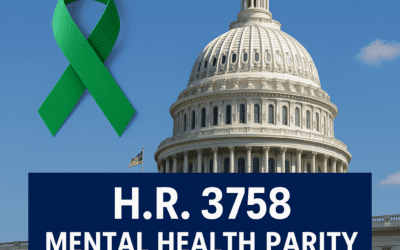Post-traumatic stress disorder (PTSD) is a recognized psychiatric impairment resulting in a severe work impairment. According to WebMD, approximately 5.2 million Americans have PTSD each year, and 7.9 million Americans will develop PTSD during their lifetime.
PTSD is a condition that results from exposure to actual or threatened death, serious injury, or sexual violence. It can follow when directly experiencing such an event, witnessing or learning about what has occurred to a close family member or friend, or repeated exposure to traumatic events such as what first responders regularly experience.
Table of Contents
What Are the Symptoms of PTSD
PTSD is diagnosed when someone has one or more of the following symptoms:
- recurrent memories of the traumatic event,
- recurrent distressing dreams about the event,
- flashbacks that cause the individual to feel they are reliving the event, or
- intense psychological distress at exposure to cues that trigger a recall of the traumatic event.
Persons with PTSD can react in various psychological ways, including avoidance of places or people, or cause other psychological symptoms such as emotional outbursts, reckless or self-destructive behavior, hypervigilance, and concentration and sleep disturbances.
How is PTSD Diagnosed?
PTSD symptoms usually manifest near the traumatic event but may be triggered later by exposure to a cue that reminds the event. There are no laboratory tests to diagnose PTSD. The impairment is diagnosed by a psychiatrist or psychologist who performs a clinical interview.
How is PTSD Treated?
PTSD is treated with medications and psychotherapy. While treatment is usually effective in managing symptoms of PTSD, not everyone can be treated successfully; and PTSD may also result in depression, anxiety, substance abuse, eating disorders, and suicidality.
Can I File a Disability Claim Due to PTSD?
A diagnosis alone is rarely enough to qualify for disability benefits. However, if the symptoms of PTSD are unmanageable and affect someone’s ability to concentrate at work, pay attention, follow instructions or procedures, or work with others, it may be considered disabling. There are three key points to keep in mind, though:
- First, the condition has to impair someone’s ability to work at their regular occupation as the occupation is performed in the national economy rather than in relation to their specific job or working for a particular employer. If someone is assaulted at work, PTSD symptoms may make it impossible for that person to return to that place of work because it would trigger a reaction. If that individual could work in a different location or with another supervisor, they likely would not be found disabled.
- Second, the condition has to result in impairing symptoms for a significant period to qualify for long-term disability benefits. Many policies have an “elimination period” of 180 days, which is the period between when the disability begins and when benefits start. If PTSD can be successfully treated and symptoms managed within that period, benefits would not be payable. However, if there is short-term disability coverage, such benefits may be available even if long-term disability benefits are not.
- Conversely, claimants do not have to prove their disability is permanent to qualify for benefits with certain exceptions. Benefits may be available for a year or more until symptoms can become manageable.
- However, it is also important to keep in mind that many disability insurance policies limit the payment of benefits for mental health conditions to no more than 24 months, which means benefits may be terminated even if the claimant is not yet ready to return to work.
How Do I Qualify for Benefits for PTSD?
If someone has PTSD, is unable to work, and their employer offers disability benefits, the application process requires certification of disability due to PTSD by a qualified medical professional. While any doctor or therapist can complete an attending physician’s statement for the insurance company, it is preferable to have a psychiatrist or psychologist complete the form with a doctoral certification (Ph.D. or Psy.D.). In addition to completing the form, the treating doctor will likely need to produce records of treatment that would enable the insurer to verify that the diagnostic criteria for PTSD are present and that the claimant is receiving appropriate treatment.
The diagnostic criteria for PTSD are enumerated in the Diagnostic and Statistical Manual of Mental Disorders (5th edition) and have stringent requirements. Not all traumatic stress that someone experiences is sufficient to lead to a PTSD diagnosis. Nor is a diagnosis alone enough to support a claim – there needs to be verification of symptoms that impair the patient’s ability to work with continuity. Psychotherapy records, records from Veterans’ clinics, employee assistance programs, and other providers who can help verify the diagnosis and severity of symptoms, as well as their persistence, would bolster the claim. In addition, there are several well-established instruments used by psychiatrists and psychologists to assess symptom frequency and severity. Other more generalized tests may also help evaluate PTSD. Those tests include the Minnesota Multiphasic Personality Inventory (MMPI), the Personality Assessment Inventory (PAI), and the Millon Clinical Multiaxial Inventory (MCMI), which are well-recognized tests in the field of psychology. An additional advantage of those tests is that they include built-in validity measures that would help prove the reliability of the findings.
An attorney experienced in handling disability insurance claims involving PTSD can be invaluable in establishing an entitlement to benefits. Unlike cardiac, neurologic, or orthopedic disabilities, there is no dipstick laboratory test for PTSD. Thus, insurance companies may be skeptical about a disability claim due to PTSD and question the sufficiency of the evidence presented. An attorney familiar with what is needed to prove disability due to PTSD can offer valuable advice and assistance in helping a claimant apply successfully for benefits.







